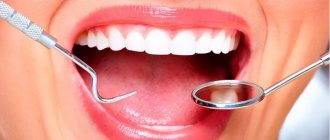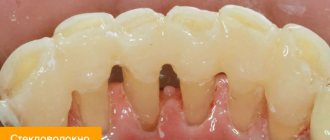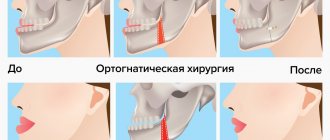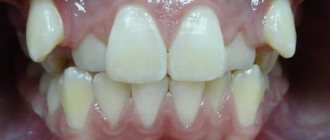Maxillary fractures account for 2 to 5% of facial fractures. For a more complete understanding of this topic, let us analyze the anatomical structure of the upper jaw and border bones. The upper jaw is a paired bone, located in the center of the face and connected with other bones of the facial and cerebral skull: zygomatic, frontal, nose, ethmoid, sphenoid, lacrimal. There are four surfaces of the body of the upper jaw : anterior, infratemporal, orbital, nasal. The infraorbital foramen is located on the anterior surface. On the infratemporal there is a tubercle of the upper jaw, to which the head of the lateral pterygoid muscle is attached and there are 3-4 openings through which the posterior superior alveolar branches enter the thickness of the bone. On the orbital surface there is an infraorbital fissure through which the infraorbital nerve enters the orbit, passing in the infraorbital canal and giving off the posterior, middle and anterior alveolar branches. The nasal surface is connected to the perpendicular plate of the palatine bone, the inferior turbinate and the uncinate process of the ethmoid bone. Between the inferior and middle conchae is the opening of the maxillary sinus. Anterior to it is the nasolacrimal duct, which opens into the nasal cavity. The large palatine canal runs posterior to it. In the area of the upper jaw, the frontal, alveolar, palatine and zygomatic processes are distinguished. The maxillary sinus is located in the body of the upper jaw; it is the largest of the paranasal sinuses. Thus, the upper jaw takes part in the formation of the orbit, nasal cavity and mouth . The walls of the maxillary sinus are thin. However, the upper jaw is able to withstand significant mechanical loads. This is due to the fact that the trabeculae of the spongy substance have a vertical type of structure, and the compact substance has thickenings in certain areas called controphos. There are 4 buttresses : frontonasal, zygomaticalveolar, pterygomaxillary and palatine. They determine the resistance of the upper jaw to chewing pressure and its ability to withstand significant mechanical influences.
Clinical picture and diagnosis of fractures of the upper jaw
In a non-gunshot fracture of the upper jaw, its gap runs along the sutures connecting it with other bones of the facial skeleton, as well as with the bones that form the base of the skull. It is along them that the zone of reduced bone tissue strength is located. This may explain why more often the fracture gap does not pass strictly within the anatomical boundaries of the upper jaw, but extends to the adjacent bones associated with it. Therefore, in clinical practice, they are faced not so much with a fracture of the upper jaw, but with its breaking out along with areas of other bones of the face and the base of the skull. This causes a variety of clinical manifestations, severity and different outcomes of injuries to the upper jaw. In clinical practice, most doctors use the classification proposed by Le Fort in 1901, who experimentally identified and described various types of fractures of the upper jaw.
In accordance with the order of their description, the author identified: upper ( Le Fort I ), middle ( Le Fort II ) and lower ( Le Fort III ) types of fractures. According to this classification, fractures of the upper jaw are bilateral, and their gaps run symmetrically. Etiology Severe mechanical trauma : road traffic accident, the victim falling face down from a height, a heavy object falling on the face (rebar, sports equipment, etc.), a kick in the face, etc. These fractures are usually accompanied by traumatic brain injury . The broken upper jaw can move posteriorly - in the direction of the applied force; down - due to the own gravity of the fragment, as well as due to the traction of the medial pterygoid and the masseter muscle itself (in case of a type I and II fracture). It moves down unevenly: the posterior sections of the jaw shift more than the anterior ones, due to the traction of the medial pterygoid muscle.
Types of alveolar bone fractures
Types of traumatic injuries:
- With a partial fracture, the configuration of the jaw does not change, only the integrity of the outer layer of the bone is damaged.
- With an incomplete fracture, all layers of bone substance are damaged, but the alveolar process does not change shape and does not change its anatomical position.
- With a complete fracture, the gap between the fragments of the jaw is clearly visible.
- The formation of a bone defect is characterized by the complete separation of a certain section of the alveolar process.
- A comminuted fracture is a serious injury, since several fragments are formed that can mix in different directions.
The most favorable fractures are non-displaced. With them, in most cases, it is possible to restore the jaw completely. The displacement is formed due to mechanical action, as well as muscle contraction, which stretches the bone fragments in different directions.
Clinical picture and diagnosis of Le Fort type I fractures of the upper jaw (upper type)
The fracture gap passes in the area of connection of the frontal process of the upper jaw with the nasal part of the frontal bone in the area of its ethmoid notch. The anterior edge of the latter is connected to the nasal bones, and the posterior edge is connected to the anterior edge of the perforated plate of the ethmoid bone, which participates in the formation of the base of the skull in the area of its anterior fossa. The posterior sections of the nasal part of the frontal bone contain cells that are in contact with the ethmoid bone and form the roof of its cells. Next, the fracture gap spreads along the inner wall of the orbit to the junction with the superior orbital and inferior orbital fissures, then along the outer wall of the orbit, directed upward and anteriorly to its superior outer corner. Here it runs along the frontozygomatic suture, then posteriorly and down the large wing of the sphenoid bone to the lower surface of the body and the upper part of its pterygoid process. The zygomatic process of the temporal bone and the nasal septum are also broken.
Thus, in a Le Fort I fracture, the upper jaw, along with the other facial bones, is separated from the bones of the skull.
Diagram of a Le Fort I fracture of the upper jaw. Front view
The broken bone conglomerate, in addition to the upper jaw, includes the paper plate of the ethmoid bone, the lacrimal bone, part of the frontal, zygomatic and sphenoid bones. It should be noted that the orbital surface of the frontal bone, the ethmoid bone and the body of the sphenoid bone form the anterior cranial fossa, and the body and large wing of the sphenoid bone take part in the formation of the middle cranial fossa. Consequently, a Le Fort I fracture of the maxilla is inevitably accompanied by a fracture of the base of the skull. This type of fracture can be classified as a fracture of only the upper jaw conditionally, and the terms “craniofacial separation” and “subbasal fracture” existing in the literature more accurately reflect its essence: as a fracture of the bones of the midface. A Le Fort type I fracture is the most severe : signs of a fracture of the base of the skull and brain damage of varying severity prevail. While maintaining consciousness, the patient complains of double vision when the body is upright, decreased visual acuity, painful and difficult swallowing and opening the mouth, improper closure of teeth, sensation of a foreign body in the throat, retching, choking and nausea. The latter signs are not associated with brain injury, but arise as a result of mechanical irritation of the reflexogenic zone of the posterior wall of the pharynx or the root of the tongue by a small tongue that has moved posteriorly and downward along with the hard and soft palate. On examination, pronounced swelling is noted in the eyelids, root of the nose, infraorbital, buccal and temporal areas. The patient's face takes on a moon-shaped shape. In the area of the zygomatic arches, tissue retraction may be detected. Hemorrhage in the upper and lower eyelids, as well as other tissues of the periorbital zone and conjunctiva, is clearly visible, which is called the “symptom of glasses.” Sometimes the swelling of the conjunctiva is so significant that it bulges between closed eyelids. In the horizontal position of the patient, his face is flattened, and enophthalmos may be noted. When the patient moves to a sitting position (vertical), the face lengthens, the eyeballs move downward, and the palpebral fissure widens. Subjectively, this is accompanied by increased diplopia. Sometimes the patient, trying to eliminate diplopia, closes one eye or places a finger under the eyeball, lifting it. Mouth opening is limited . If you ask the patient to close his teeth tightly, it can be noted that the eyeballs move upward, and the palpebral fissure narrows; subjectively, double vision decreases. The return of the patient to a horizontal position is accompanied by flattening of the face and a change in the relationship of the teeth of the upper and lower jaw, and a decrease in diplopia. Sometimes, upon palpation, you can identify a bony protrusion between the nasal part of the frontal bone and the frontal process of the upper jaw, as well as in the area of the zygomaticofrontal suture (the upper outer part of the orbit) and the zygomatic arch. Occasionally, crepitation caused by airborne emphysema may be detected in the root of the nose. In case of damage to the orbital nerve (n. ophthalmicus), pain sensitivity of the skin in the forehead, upper eyelid, inner and outer canthus decreases or disappears. Opening the mouth is accompanied by pain in the upper jaw. At maximum mouth opening, the distance between the upper and lower incisors is less than normal, due to the downward displacement of the upper jaw. An open bite is determined. When percussing the teeth of the upper jaw, a dull (low) sound is noted. The soft palate moves posteriorly and downward. Its tongue touches the root of the tongue and the back wall of the pharynx. When pressing on the hooks of the pterygoid processes of the sphenoid bone, hard palate or last molars, pain is noted along the expected fracture gap (a positive symptom of loading). Pressing upward on the hard palate leads to shortening of the midface, narrowing of the palpebral fissures and wrinkling of the skin at the root of the nose. With careful displacement of the alveolar process in the frontal area, synchronous mobility is determined in the frontonasal and frontozygomatic regions and along the length of the zygomatic arch (fracture zone). The detection of pathological mobility of the upper jaw is direct evidence of its fracture. Sometimes a leak of cerebrospinal fluid (CSF) is visible along the back wall of the throat , which can also be discharged from the nasal cavity or ears. Sometimes the upper jaw is additionally separated into two halves. The fracture gap never runs along the middle suture, but is located parallel to it. In such patients, hemorrhage on the hard palate along the midline and a bony step or laceration of the mucous membrane of the hard palate and a small gap between the fragments lateral to the midline leading into the nasal cavity may be detected. When the upper jaw is fractured in the upper type, the optic nerve is often damaged, resulting in decreased visual acuity and loss of visual fields. If the oculomotor (III), trochlear (IV), abducens (VI) or orbital nerve is damaged, the eye may partially open, convergent or divergent strabismus, diplopia, and impaired pain sensitivity of the skin in the area of the upper eyelid, external and internal corners of the palpebral fissure may appear. When examining patients with suspected Le Fort I fracture of the upper jaw, the participation of a neurologist and neurosurgeon is necessary . There are observations when the upper jaw was broken out as a single block with the frontal bone (Billet-Vignell, M.B. Shvyrkov). On a radiograph in a direct projection in patients with a Le Fort type I fracture of the upper jaw, the fracture gap is localized in the region of the root of the nose, zygomatic arch, greater wing of the sphenoid bone and the frontozygomatic joint, and the transparency of the maxillary and sphenoid sinuses is reduced. The lateral radiograph may show evidence of a fracture of the body of the sphenoid bone.
Nutritional Features
For full rehabilitation after any injury, it is extremely important to provide the patient with a balanced diet containing all the vitamins and microelements necessary for cell regeneration.
In case of injuries to the upper jaw, this condition is difficult to fulfill due to the inability of the victim to chew food. To feed the patient, you will have to use special devices: tubes, bottles, straws, sippy cups.
The diet should consist of the following dishes:
- meat broths;
- raw eggs;
- pureed vegetable soups;
- natural juices with pulp;
- puree of vegetables and meat;
- liquid porridges;
- fermented milk products.
As bone tissue is restored, the patient should be offered more rigid dishes to develop the jaw. Crackers, hard fruits and other food components are prohibited until complete recovery. The process takes approximately one month.
The transition to solid food takes place gradually, under the strict supervision of the attending physician!
Food that is icy or too hot cannot be eaten; all dishes must be at room temperature. It is advisable to eat often, but little by little. After removal of the immobilizing structures, it is not recommended to quickly return to your usual diet. You should follow a gentle diet for some time to prevent gastrointestinal disorders.
Clinical picture and diagnosis of Le Fort type II fractures of the upper jaw (medium type)
In this type, the fracture gap passes at the junction of the frontal process of the upper jaw with the nasal part of the frontal bone in the area of its ethmoid notch, along the inner wall of the orbit to the inferoorbital fissure. It then spreads anteriorly along the lower wall of the orbit to the infraorbital margin. The fracture gap crosses it along or near the zygomaticomaxillary suture. Then it goes down and backward along the anterior surface of the upper jaw, crosses the zygomaticalveolar ridge, passes along its infratemporal surface and spreads to the pterygoid process of the sphenoid bone (sometimes at the border of its upper and middle thirds). The nasal septum is broken. Sometimes the fracture gap passes through the infraorbital canal and through the infraorbital foramen with damage to the infraorbital nerve.
Scheme of a Le Fort II fracture of the upper jaw: a - front view; b - side view
The terms “maxillofacial separation” and “suborbital fracture” existing in the literature most reliably reflect the essence of a fracture of the upper jaw of this type. A Le Fort II fracture rarely results in a basal skull fracture and brain damage. Patients complain of pain in the upper jaw, which intensifies when closing the teeth and chewing food, the sensation of a foreign body in the throat, the urge to vomit, difficulty breathing not only through the nose, but also through the mouth, sometimes double vision, numbness of the skin in the infraorbital region and upper lips, lower eyelid, wing and skin of the nasal septum, numbness of the incisors, canines, premolars and mucous membrane of the alveolar process on the vestibular side within these teeth. Sometimes there is a decrease or loss of smell when the olfactory filaments passing through the perforated plate of the ethmoid bone are ruptured or pinched. If the nasolacrimal duct is damaged (flattened), complaints of lacrimation may occur. Upon examination, a change in the configuration of the face is determined due to post-traumatic edema, sometimes subcutaneous emphysema and hemorrhage in the soft tissues of the infraorbital and zygomatic region. There are hemorrhages in the orbital area. It is more pronounced in the area of the root of the nose, upper and lower eyelids, conjunctiva and sclera of the eyeball and less intense or not detected in the area of the upper outer quadrant of the orbit. However, bruise of the soft tissues of the periorbital zone at the time of injury can determine the uniformity of the location of the hemorrhage zone around the orbit. Hemorrhage and swelling of the eyelids are sometimes so pronounced that it is difficult to examine the eyeball. The conjunctiva is significantly saturated with blood, chemosis is pronounced, and the conjunctiva bulges between the closed eyelids. With hemorrhage into the retrobulbar tissue, exophthalmos can be detected. In a horizontal position, the patient's face is flattened due to the posterior displacement of the fragment and pronounced contouring of the zygomatic bones. In an upright position, the patient's face is somewhat elongated due to the displacement of the upper jaw downwards. When palpating the soft tissues of the infraorbital region and the root of the nose, crepitus is sometimes felt - a sign of subcutaneous emphysema. The latter occurs as a result of exfoliation of the mucous membrane of the maxillary sinus when a fragment of the upper jaw is displaced and a kind of valve is formed. This is accompanied by the creation of negative pressure. When the mucous membrane ruptures, atmospheric air rushes into the low-pressure zone and penetrates the subcutaneous fat. Pain sensitivity is reduced or absent in the area of innervation of the small crow's foot. When palpating the lower edge of the orbit, a bony protrusion is identified - a “step”. In the area of the root of the nose it is difficult to determine due to the pronounced swelling of the tissues. In case of damage to the nasolacrimal duct, in addition to lacrimation, blood may appear from the lacrimal openings. Opening the mouth is painful and limited. The bite is broken. More often, only the molars are in contact (open bite). When percussing the teeth of the upper jaw, the percussion sound is low (dull). There is hemorrhage in the tissue of the upper vestibule of the mouth, corresponding to the large and partially small molars. A bony protrusion is palpated in the area of the anterior wall of the upper jaw, the zygomaticalveolar ridge and the area of the tubercle of the upper jaw. Pain sensitivity of the gum mucosa is reduced or absent within the incisors, canines and premolars. The soft palate is displaced posteriorly. A small tongue touches the back of the pharynx or the base of the tongue. In the upper part of the pterygomandibular fold, the anterior palatine arch and the soft palate, there may be hemorrhage due to its saturation with blood descending from the fracture site in the area of the tubercle of the upper jaw and the pterygoid process of the sphenoid bone. If a hematoma forms in the peripharyngeal space, the lateral wall of the pharynx bulges. The load symptom is positive : when pressing on the hooks of the pterygoid processes of the sphenoid bone or upper molars, pain occurs along the fracture gap. When determining the load symptom, the bone fragments of the frontal process of the upper jaw, the lower edge of the orbit and the zygomaticalveolar crest simultaneously shift upward, which is determined by palpation. In addition, a skin fold appears in the area of the root of the nose. An X-ray of the facial bones in the nasomental and lateral projections shows a violation of the continuity of the bone in the area of the root of the nose, the lower edge and bottom of the orbit, the zygomaticalveolar ridge, and a decrease in the transparency of the maxillary sinuses due to hemosinus.
Treatment
Such an injury poses a threat to the health and life of the patient and requires complex treatment. Therapy includes activities aimed at:
- immobilization of fragments;
- stimulation of recovery processes;
- preventing complications;
- return to full functionality of the jaw.
First, the doctor disinfects the injury site, and a tracheotomy is performed on the victim to restore breathing. Next, the bone fragments are combined, and an immobilization splint is applied. The manipulation is very painful, so it is performed under local anesthesia.
In difficult cases (for example, when the zygomatic arch or maxillary sinus is destroyed), osteosynthesis is required. The fragments are fixed using special devices: wires, plates, screws. It is impossible to refuse intervention; injury can provoke the development of severe disorders.
Causes
In addition to mechanical trauma from an impact, the cause of a fracture of the alveolar bone may be some disease that disrupts the normal state of bone tissue:
- osteomyelitis - inflammation of bone tissue;
- fibrous osteitis, characterized by bone dystrophy, thinning of the bone structure;
- various cysts and neoplasms that cause bone degeneration.
If the patient has the above diseases, even a slight impact on the bone can lead to a fracture of the alveolar process.
In children aged 5 to 7 years, that is, at the stage of growth of permanent teeth, trauma to the alveolar process can also be diagnosed due to the presence of follicles of permanent teeth in the bone, which subsequently disappear.










